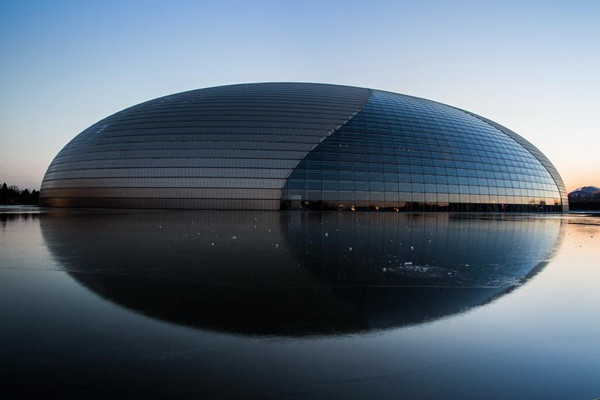Metal materials are used in buildings, especially in roofs. Copper is first used. Surface treated steel plates, aluminium, stainless steel and titanium are developed in turn. With the sustained development of national economy and the continuous improvement of people’s living standards, people’s requirements for urban buildings, especially for the aesthetics of buildings, are getting higher and higher. In recent years, architects have sought to use more advanced new building materials than traditional materials. Titanium metal has many excellent properties, which fully meet the many special performance requirements of building materials, so it is favored by architects and construction industry.
Japan is the first country to apply titanium to buildings, and it is also the country with the largest application of titanium in buildings. It is mainly used in the roof of buildings, curtain walls, ports, bridges, tunnels, exterior walls, doorplate, railings, pipes and so on. Britain, France, the United States, Spain, the Netherlands, Canada, Belgium and Switzerland all have examples of using titanium metal as roof and curtain wall in buildings. Sweden, Singapore and Egypt have also begun to use titanium metal in some new buildings. In 1997, the Guggenheim Museum in Bilbao, Spain, used titanium plates to construct curved surfaces. Abu Dhabi Airport also uses titanium, which uses hundreds of tons. It is the first airport in the world to use titanium as building materials.
China first proposed the application of titanium metal building is the National Grand Theatre, the first application is the Hangzhou Grand Theatre. Titanium-based buildings include the entrance hall of China National Nonferrous Engineering Design and Research Institute, the First Pavilion of Linping East, Hangzhou, the roof of Shanghai Circus Acrobatic Stadium and Dalian Saint-Asia Polar World. The titanium sculpture “Dolphin and Man” in Riverside Park of Baoji City, Shaanxi Province, the titanium sculpture “Qian Kun Ball” in Xingtai City Center Square, Hebei Province, and the titanium sculpture “Rooster Dawn” in Baoji City Pedestrian Street, Shaanxi Province are used for urban sculpture.
China’s titanium production technology is basically mature, production and design scale is large, but the sales market is not large, economic benefits are not ideal, mainly the lack of customer satisfaction with the technical and economic performance of good products. The present situation of titanium for construction in China is as follows:
- Single product: As a structural material, there are not enough varieties for users to choose. As a surface decoration material, there is no large-scale production enterprise of titanium surface treatment in our country at present, and the processing still stays in the production mode stage of manual workshops, which is not conducive to the large-scale use of titanium as decorative materials.
- Low grade: There is no high-quality products, not to mention the large supply of titanium and related composite materials. It can only produce some models, city carvings, crafts, etc. There is no high-grade surface decorative materials and production means.
- High price: Because there is no stable high-quality products, it is impossible to have a wide range of applications, resulting in a small amount of use, high prices, and more unfavorable to the promotion of use.
- Designer’s factor: There is no similar vocational training system in our country, and new materials are not stored in the thinking of architects after they are invented. As a result, the original design drawings of buildings seldom include titanium metal design, and the use is obviously less.
In recent years, with the progress of global oceanization and the falling price of titanium raw materials, the demand and application scope of titanium in the field of construction and decoration are constantly expanding. It is expected that the demand for titanium materials in the construction and decoration industries will reach more than 5000 tons in the next few years, and the demand for titanium materials in marine engineering and island construction will reach more than 5000 tons. The amount of titanium used in shipbuilding industry will exceed 5000 tons. However, there is no Titanium Material Manufacturing Enterprise specializing in building decoration in our country. It is only simple to apply industrial materials in the civil field, which is far from the market and industry demand. It is urgent to establish specialized production lines to meet the various professional needs in this field.
Titanium is a metal that can be produced in large quantities at the lowest price and is almost completely free from seawater corrosion. As a building material, the reflectivity of titanium material is relatively low, and it presents a light silver gray, with a charming natural metallic luster. Baoji Titanium Industry Research Institute will produce titanium materials for architectural decoration, mainly for roofs of buildings, followed by curtain walls, harbour facilities, bridges, submarine tunnels, exterior walls, decorations, small accessories, column decorations, outfits, monuments, signboards, doorposts, railings, pipelines, anti-corrosion coatings, etc. The project uses the existing domestic titanium plate and titanium coil as raw materials, uses plastic polishing and embossing technology to make the surface of the plate bright, uniform color and metal pattern; uses large area anodic oxidation coloring technology to colorize the surface of the plate, forming colorful colors to meet the needs of building and decorative materials.
Baoji Titanium Industry Research Institute has successfully applied titanium building decoration materials to large-scale buildings in China, and achieved a number of breakthroughs.
- For the first time, domestic titanium tapes were used for building decoration materials.
- For the first time, large-area color coating was used to realize the multi-color decoration of titanium.
- For the first time, the architectural decoration of titanium has been realized.
- For the first time, the application area of multi-color titanium decorative materials in China is the largest.

